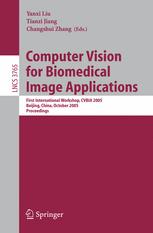

Most ebook files are in PDF format, so you can easily read them using various software such as Foxit Reader or directly on the Google Chrome browser.
Some ebook files are released by publishers in other formats such as .awz, .mobi, .epub, .fb2, etc. You may need to install specific software to read these formats on mobile/PC, such as Calibre.
Please read the tutorial at this link: https://ebookbell.com/faq
We offer FREE conversion to the popular formats you request; however, this may take some time. Therefore, right after payment, please email us, and we will try to provide the service as quickly as possible.
For some exceptional file formats or broken links (if any), please refrain from opening any disputes. Instead, email us first, and we will try to assist within a maximum of 6 hours.
EbookBell Team

4.7
26 reviewsWith the rapid increase in the variety and quantity of biomedical images in recent years, we see a steadily growing number of computer vision technologies applied to biomedical applications. The time is ripe for us to take a closer look at the accomplishments and experiences gained in this research subdomain, and to strategically plan the directions of our future research. The scientific goal of our workshop, “Computer Vision for Biomedical Image Applications: Current Techniques and Future Trends” (CVBIA), is to examine the diverse applications of computer vision to biomedical image applications, considering both current methods and promising new trends. An additional goal is to provide the opportunity for direct interactions between (1) prominent senior researchers and young scientists, including students, postdoctoral associates and junior faculty; (2) local researchers and international leaders in biomedical image analysis; and (3) computer scientists and medical practitioners. Our CVBIA workshop had two novel characteristics: each contributed paper was authored primarily by a young scientist, and the workshop attracted an unusually large number of well-respected invited speakers (and their papers). We had the good fortune of having Dr. Ayache of INRIA, France to talk about “Computational Anatomy and Computational Physiology,” Prof. Grimson of MIT to discuss “Analyzing Anatomical Structures: Leveraging Multiple Sources of Knowledge,” Dr. Jiang of the Chinese Academy of Sciences to present their work on “Computational Neuroanatomy and Brain Connectivity,” Prof.